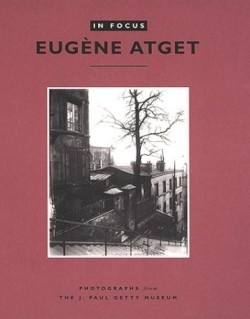In Focus
Eugne Atget
There is a poignant silence to these photographs taken of Paris at the turn of the previous century. They are pictures of storefronts, alleys, parks, riverbanks, streetscapes, street vendors, sculptures, bridges, stairways, details of ironwork, and other objects of Atget’s everyday world. Everything in these photographs is remarkably still—moving objects became nothing but a ghostly blur in the photograph—and it lends an aura of austerity to them. People often lurk in various corners and aren’t immediately perceptible, though when located are typically staring at the viewer, curious about this man with a camera.
Atget considered himself a maker of documents, intending his images to be used by artists, set designers, historians, craftsmen, and, eventually, national institutions. His over 8,500 photographs taken from the 1890s to his death in 1927 “compose a pictorial encyclopedia of the city in which he lived and that he sought to possess visually.” He consciously took photographs of parts of Paris life that he felt were disappearing, like the seasonal street carnivals. Later in his career when he was financially secure, he was able to choose subject matter to please himself. His photographs then became “more concerned with the effects of weather, season, and mood,” leaving us as viewers images of weathered convent walls, mist settling over riverboats, and cobblestone streets drenched in rain.
Towards the end of his life the Surrealists became interested in Atget, “beginning the aestheticization of his pictures,” something that Atget, who never aspired to such things, probably would have found odd. In a forum piece at the end of the book, seven museum curators and photography professors attempt to understand Atget’s art, whether it can be called art if he didn’t do it purposefully as art, whether his photographs are political or personal. The lack of technical perfection of these photographs does make one wonder about the man: is his reflection in the store window of one of his photographs simply an accident or an insightful, psychological portrait of himself? The photographs, however, can simply be enjoyed for what they are at face value: charming, beautifully sad, and revealing testimonies of a time that no longer exists in a city that possesses fewer and fewer remnants of what was.
Reviewed by
Nava Hall
Disclosure: This article is not an endorsement, but a review. The publisher of this book provided free copies of the book to have their book reviewed by a professional reviewer. No fee was paid by the publisher for this review. Foreword Reviews only recommends books that we love. Foreword Magazine, Inc. is disclosing this in accordance with the Federal Trade Commission’s 16 CFR, Part 255.

